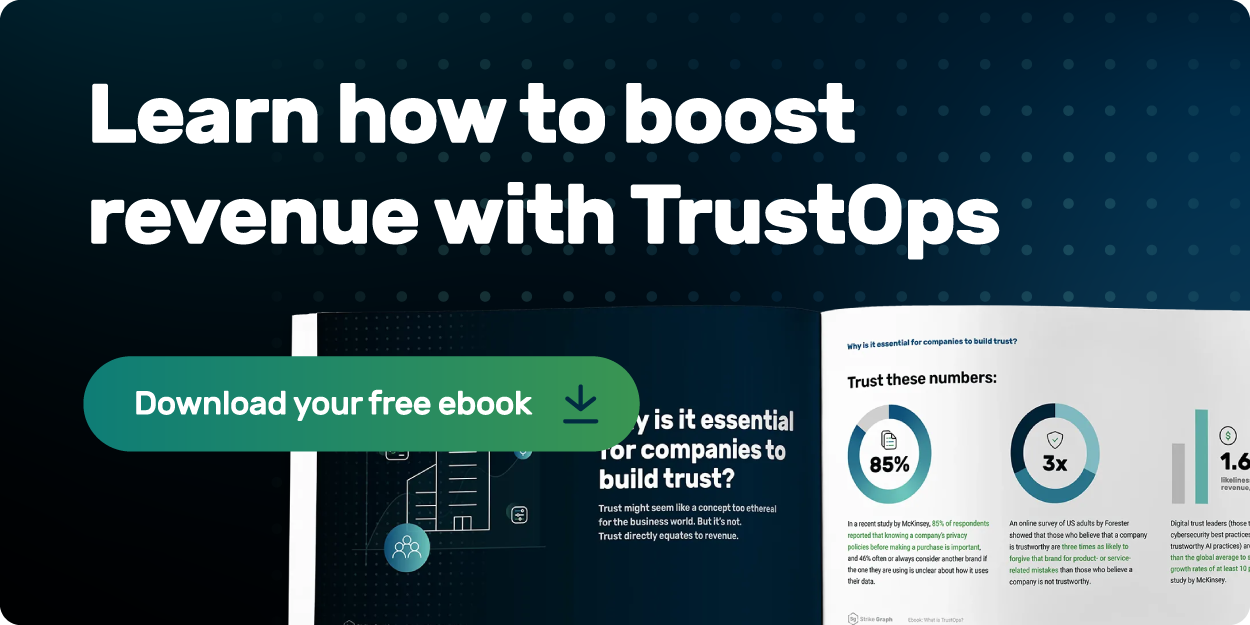Compliance tracking, also known as compliance monitoring, is the process of monitoring and organizing compliance-related information and activities. This process includes quality assurance tests, audits, and inspections — both internal and external — that check how well an organization’s business operations meet its internal processes and regulatory obligations.
Why is compliance tracking necessary? Two reasons — first, monitoring compliance performance is often a regulatory requirement and second, your organization should adhere to these key directives and regulations to ensure its own security.
What is a security compliance program?
A security compliance program is made up of an organization's policies, procedures, and processes employed to protect data and maintain security standards. These requirements apply to any organization that stores, processes, or transmits data and are typically based on recognized industry standards such as SOC 2 or regulatory frameworks such as HIPAA.
For example, organizations in the healthcare industry are required to comply with the specific data protection standards for Protected Health Information (PHI) under HIPAA, whereas industries that process credit or debit card transactions must comply with PCI DSS.
Whichever industry-specific, regional, and/or organizational frameworks or standards a company must abide by can be employed to ensure the business’s security compliance program stays on track.

Elements of a compliance tracking system
An effective compliance tracking system should be made up of three elements: compliance design, operations, and measurement.
When it comes to compliance design, a dedicated compliance team, Chief Compliance Officer (CCO), or both will usually be responsible for tracking compliance and monitoring day-to-day activities. By developing and administering tasks, they’ll help ensure compliance with all relevant regulations, laws, policies, and standards.
For operations, most organizations will employ policies and procedures, training, monitoring, and consumer complaint response. This will include an essential source document that will act as a training and reference tool for all employees. Of course, operations will differ from organization to organization depending on company size and structure, location, strategy, international business needs, and more. It’s also important to note that the whole team, not just IT, will need to be involved.
Last but not least, when it comes to measurement, conducting periodic, internal compliance audits proves you've met the standards set forth in the applicable frameworks or regulations and is essential to ensure continued compliance. This review of a company’s compliance with relevant regulations and laws will ensure continued adherence to internal procedures and policies as well as help detect compliance risk. In order to make the audit process easier, many companies use relevant compliance tools, including compliance tracking software.
Compliance tracking software
Compliance tracking software allows teams to implement effective and continuously monitored control frameworks. This not only helps alert the compliance team and/or CCO of any issues, it also helps remediate those issues while demonstrating compliance to stakeholders. Essentially, compliance tracking software can provide more robust reporting and, in turn, a more compliant business overall.
Benefits of compliance tracking
There are myriad benefits of compliance tracking. Let’s take a look.
Comply with regulations
Compliance tracking will help you demonstrate clear compliance expectations and adopt clear policy statements, making it easier to comply with regulations such as HIPAA, PCI DSS, the Family Educational Rights and Privacy Act (FERPA), and more.
Protect your assets
By better identifying and addressing security gaps within your company, you’ll be able to design policies and implement processes that allow executives to exercise control over the organization’s security posture.
Prevent data leaks
Establishing an effective compliance tracking program will help your business prevent damaging data security incidents like data leaks and data breaches.
Avoid fines and other financial losses
If properly planned, implemented, and maintained, compliance tracking can not only prevent or reduce regulatory violations, it can also reduce the risk of financial losses associated with cyberattacks and provide other cost efficiencies.
Maintain reputation
By protecting data assets — including sensitive data like intellectual property and personally identifiable information (PII )— you’ll be able to reduce the legal, financial, and reputational risk of regulatory compliance failures.
Stay abreast of changes
Regulations and requirements are continuously changing. Thankfully, compliance tracking can keep your business informed of these changes and help you better understand how to plan for tasks, timelines, and other resources moving forward.
Other benefits
Other benefits include facilitating data integrity, availability, and confidentiality within a company, minimizing vendor risk from outsourced third- or fourth-party vendors, and building customer trust by continuously maintaining privacy and security.
Distributing responsibility for compliance with Strike Graph
As part of our one-stop-shop security compliance solution, Strike Graph provides the ability to distribute responsibility for compliance across an entire organization, and then track the progress of risk mitigation from a comprehensive dashboard. We also give users the capacity to set notifications and reminders for when evidence needs to be updated, making your compliance journey easier from the word go.
.jpg?width=1448&height=726&name=Screen%20Shot%202023-02-09%20at%202.57.5-min%20(1).jpg)










